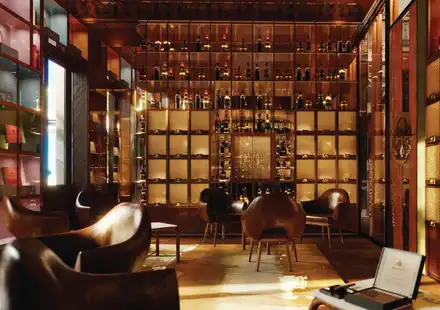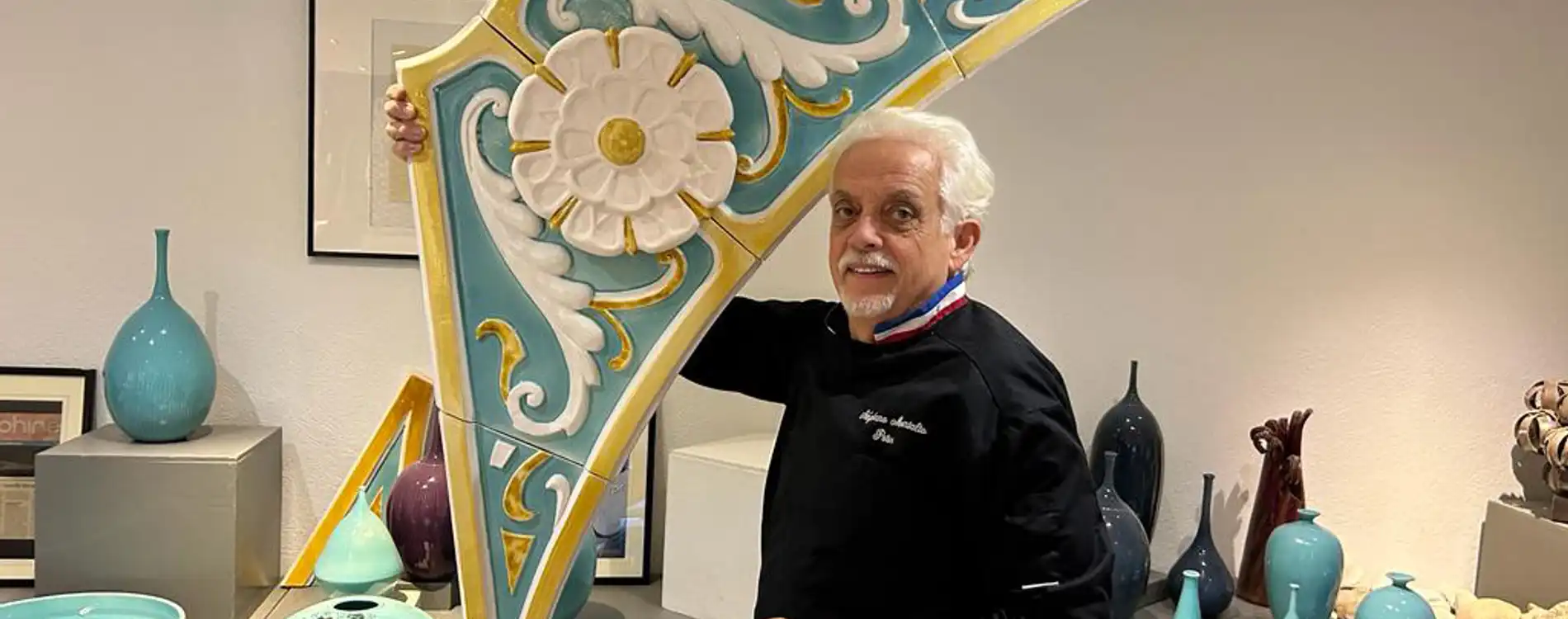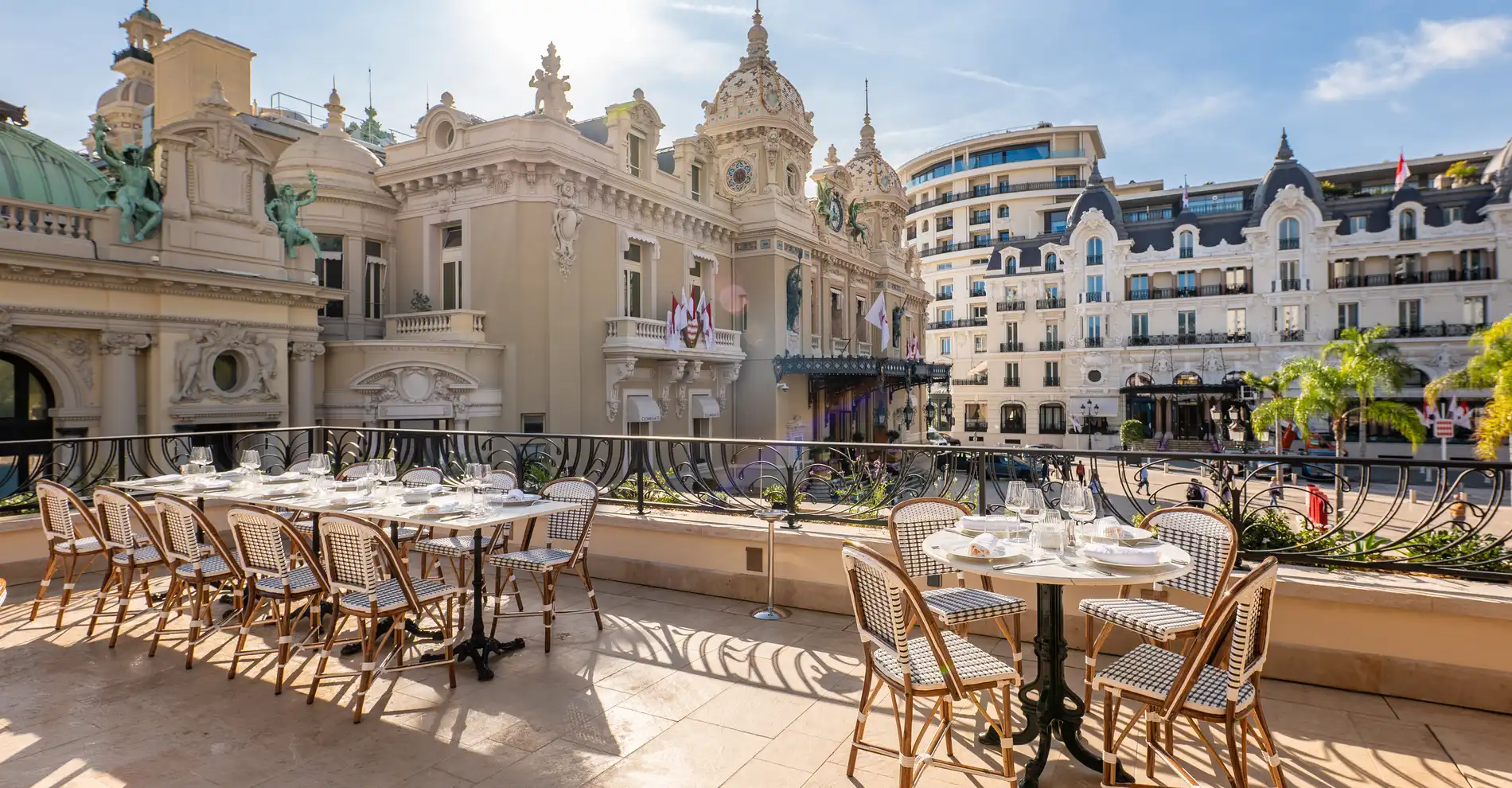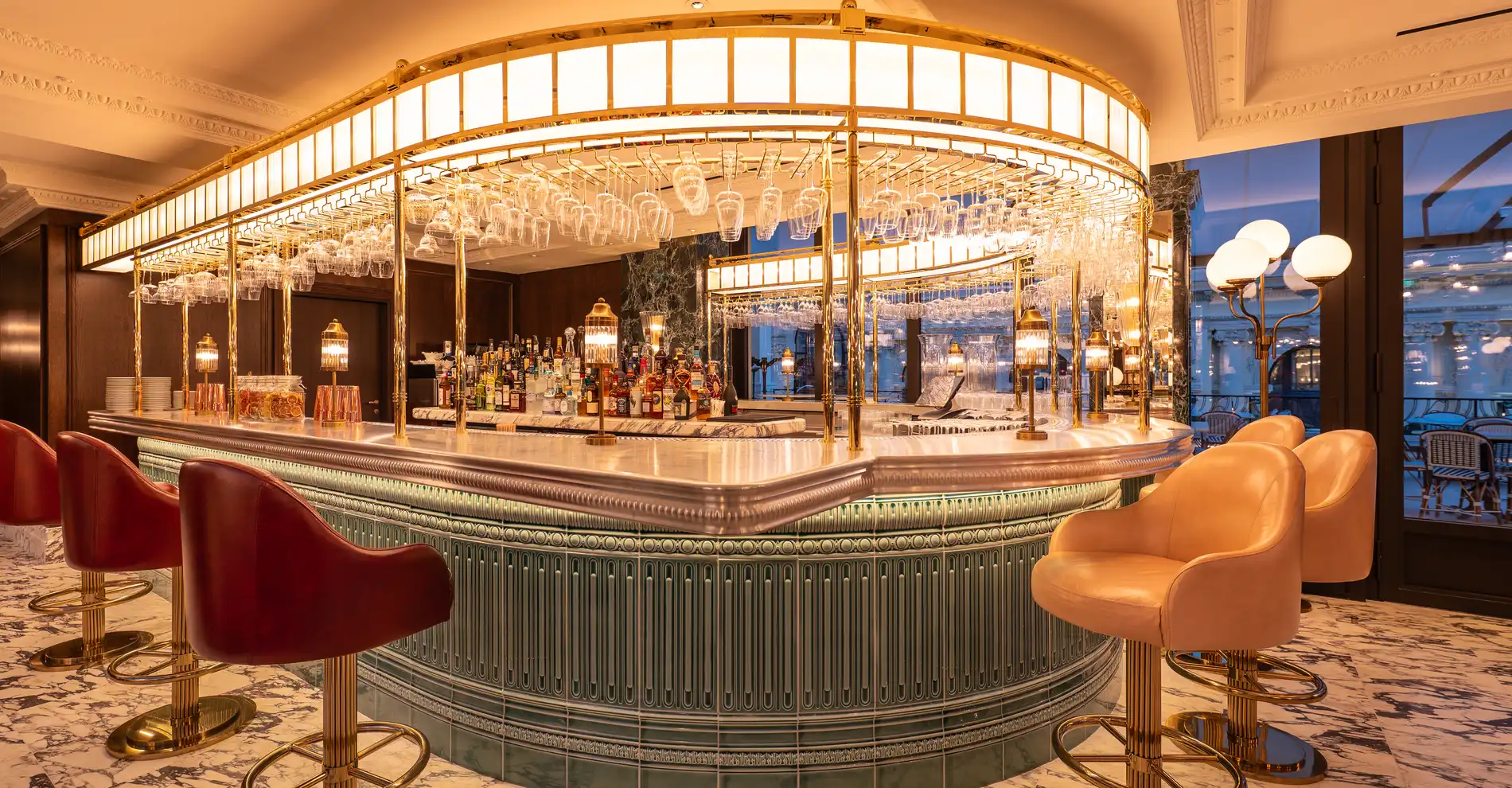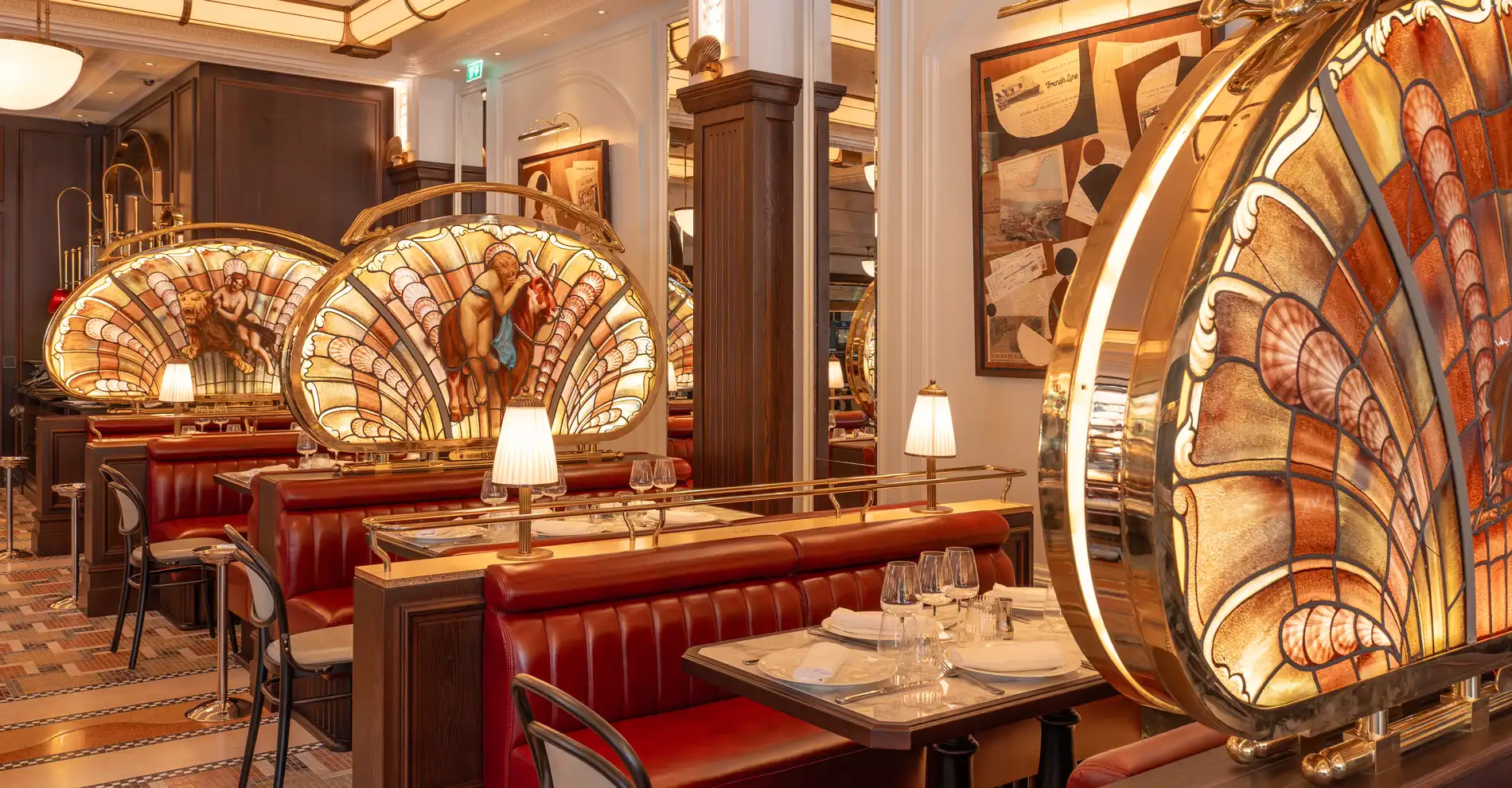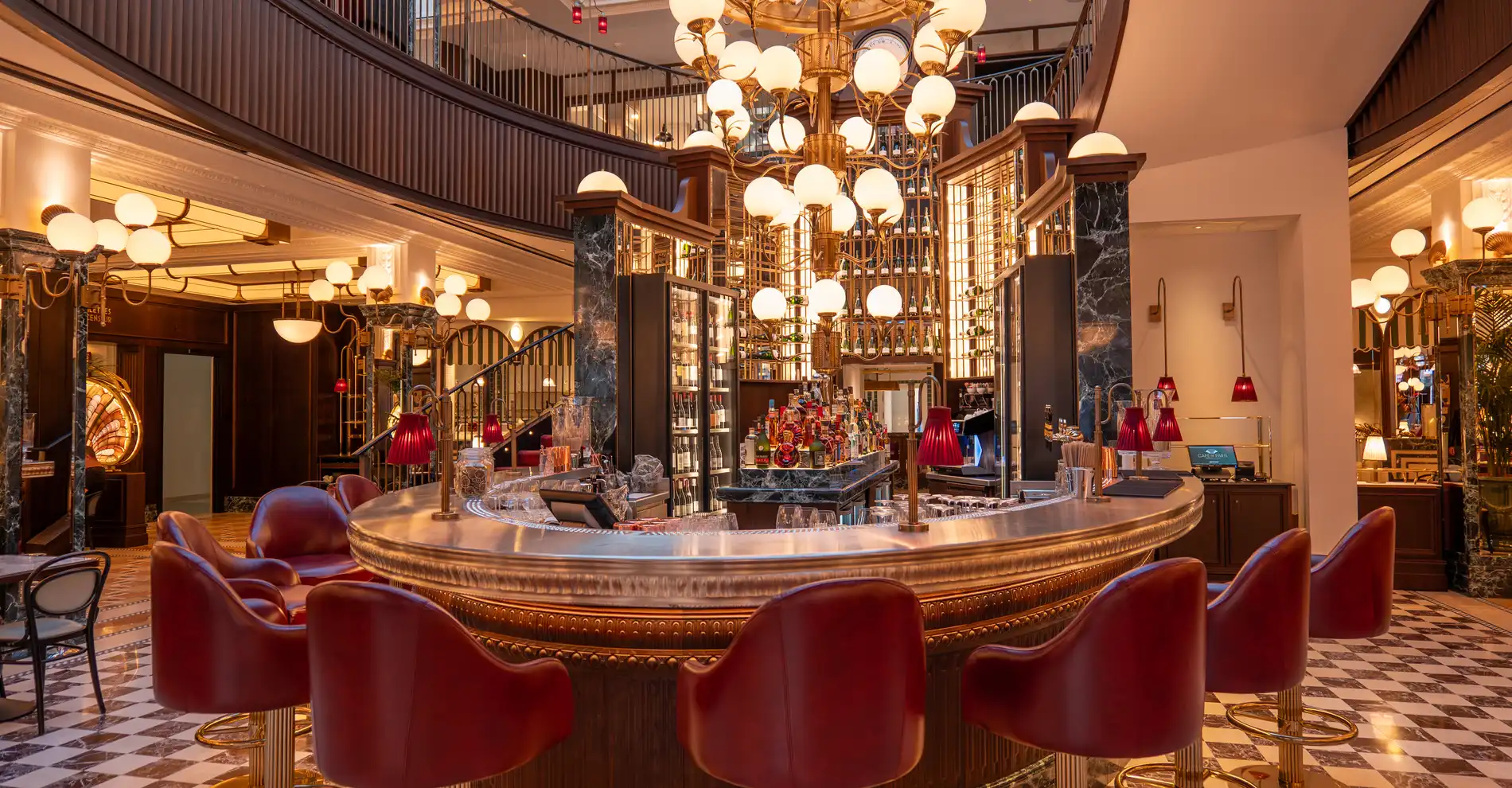Published on January 09, 2024Updated on September 09, 2024
During the renovation of the Café de Paris Monte-Carlo, the façades were adorned with new earthenware, the work of Stéphane Montalto, Meilleur Ouvrier de France potter. In his workshop, he has masterfully recreated the original ornamentation, infusing each piece with an historic soul.
These ceramics are inspired by the turn of the twentieth century, a period when the Riviera built its myth, characterised by a style that glorified femininity and plants. Montalto bears witness to this bygone era, when the art of earthenware was in harmony with the trends of the time, before giving way to international modern architecture, marked by figures such as Le Corbusier.
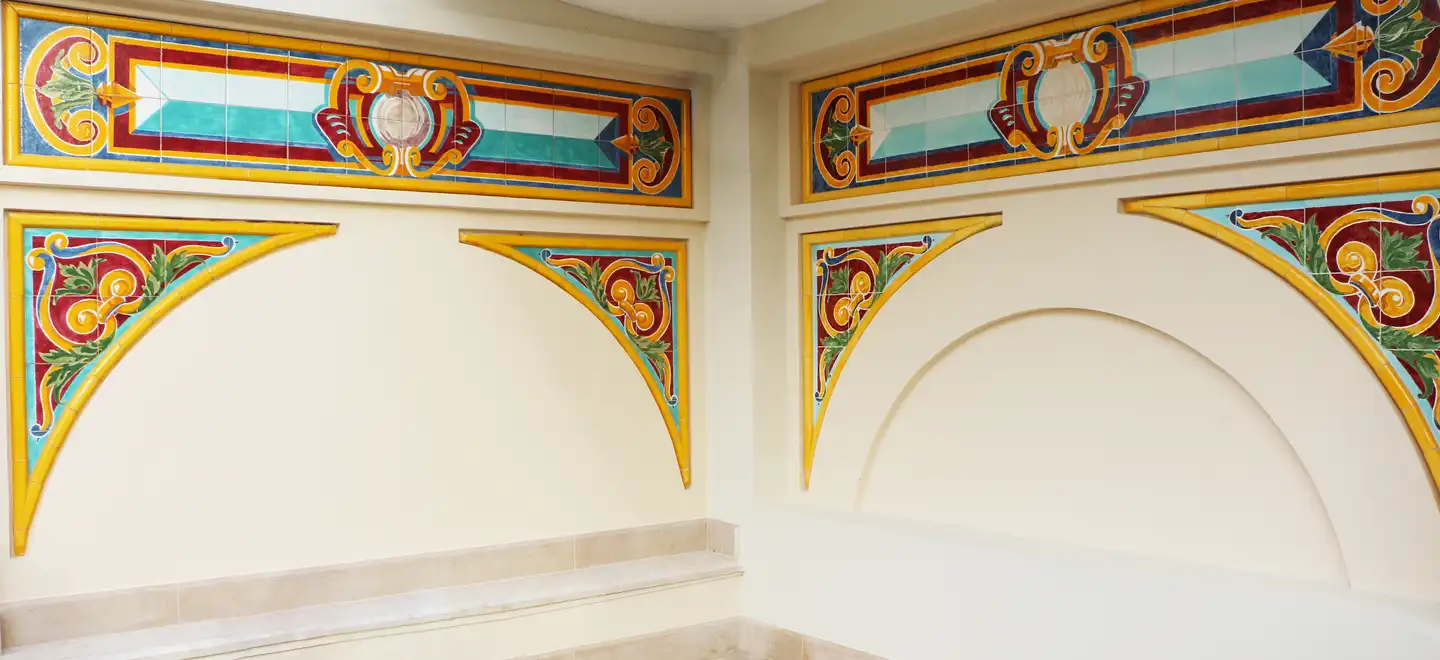
The art of ceramics, or the metamorphosis of the Café de Paris Monte-Carlo
Based in his studio in Roquebrune-Cap-Martin, this original potter has acquired additional skills over the years, enabling him to reproduce these period earthenwares exactly as they were made.
“For example, I have a catalogue of around fifty baluster designs, ceramics in green or blue inspired by Italy that each architect designed in their own way to decorate the balustrades of residences on the Riviera”, continues this Meilleur Ouvrier de France, who has worked on a font for the Matisse chapel in Vence, as well as Japanese-style tiles for Prince Albert II's gardens at the Prince's Palace.
Having been involved in the renovation of a number of buildings on the Riviera listed as Historic Monuments, in this case he responded to the call for projects from the Entreprise Générale de Peinture Jean Tubino et Fils, one of Monaco’s oldest companies, to transform the Café de Paris Monte-Carlo. “The brief was to recreate architectural ceramics in bas-relief on the avenue de Spélugues side, along with painted tiles for the façade on place du Casino, which now has a first floor,” adds Stéphane Montalto.
An increasingly valued skill-set
To extend the Café de Paris Monte-Carlo on avenue des Spélugues in keeping with the original style, Montalto used the existing historic façade as a reference point. “There was no question of making a mould because the clay sometimes shrinks up to 10% when baked, and we would then have had pieces that were too small. So I made larger models, which was really challenging, because after they are fired the elements must fit together perfectly,” continues the modeller and moulder, who then decorated the pieces with honey-coloured, white and turquoise enamels
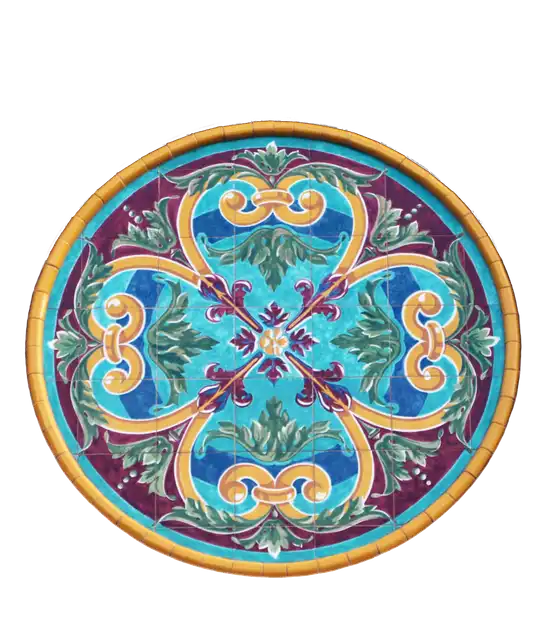
An invitation to an artistic walk
In the end, he recreated 71 tiles, which, once assembled, form a superb band of volutes that accompany passers-by. On the place du Casino side and the entrance of the Café de Paris Monte-Carlo, the earthenware decorator referred to the decorations above the Chopard boutique to recreate painted tiles with flourishing arabesques and botanical motifs.
“These are very beautiful pieces, featuring a highly unusual pattern designed at the time, which plays on colour contrasts,” adds the potter and turner, who has reproduced ceramics for the Le Corbusier project at the Cité de l’Architecture et du Patrimoine in Paris, and worked on the restoration of tiles for Eileen Gray’s Villa E-1027. “If these productions are now part of our heritage, it wouldn’t take much for architectural ceramics to become fashionable again, as can be seen from several recent projects I was asked to work on,” he concludes.
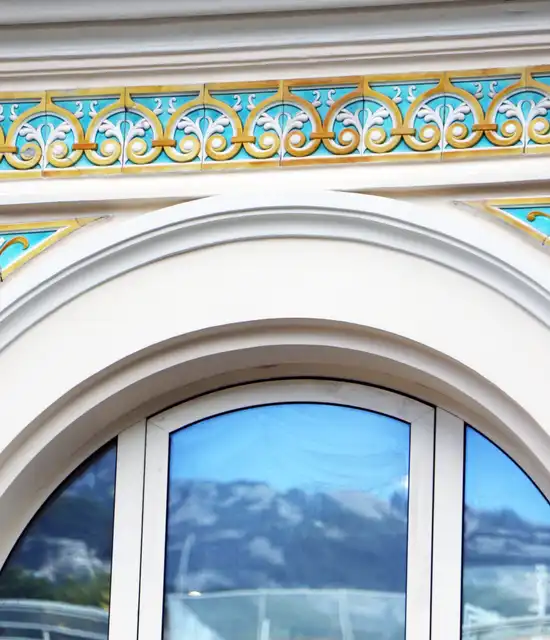
You might also like…
Marlow : so chic, so british
Discover the warm and sophisticated new Marlow café-lounge, in the heart of the new Mareterra seafront district.

Institut audiovisuel de Monaco
Based on the Boulevard du Jardin Exotique, this repository stores over 100,000 audio documents
and almost 500,000 photos of the Principality and the Riviera. Treasures.
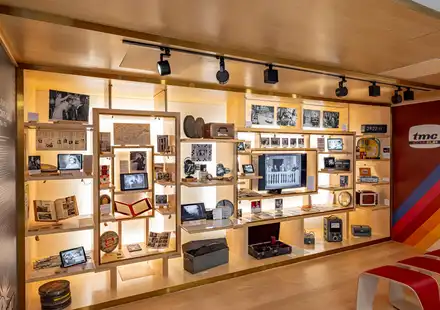
Monte-Carlo Cigar Club
Dominique London, a leading light in the luxury cigar world, is teaming up with Monte-Carlo Société des Bains de Mer
to open the Monte-Carlo Cigar Club in 2025. This exclusive new venue promises to be an icon in the making.
